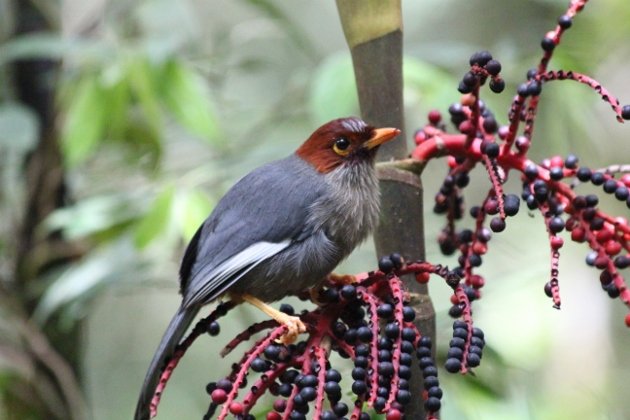
I love babblers, and whether you treat them as a single family or several (and I understand the jury keeps getting called back on that one), its a hard family not to like. It’s perhaps an easy one for many people to overlook, since they don’t occur in Europe or the Americas, but visit a patch of forerst or bush in Asia or Africa and there should be one or two species around. It can reach quite ludicrous levels in some places, like in Danum Valley where you can see ten different species of a morning.
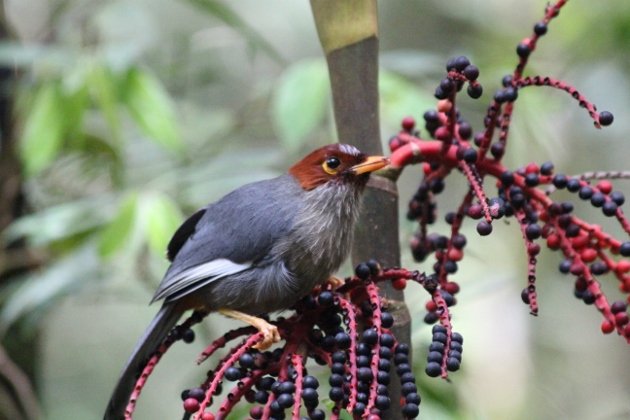 Chestnut-hooded Laughingthrush (Rhinoichla treacheri)
Chestnut-hooded Laughingthrush (Rhinoichla treacheri)
Babblers are a diverse family or group of families, but when you say babbler I think of birds that are a) highly social and b) quite noisy. Now certainly not all are like this, but one that is is the Chestnut-hooded Laughingthrush. As names go its pretty apt, it has a hood, that hood is indeed chestnut coloured, it does look not unlike a Turdus thrush, and it does make a laughing call. If you told someone to go out into a forest and identify it just on its name, chances are they’d manage it.
You hear a lot of these guys as you walk through the forest in Mt Kinabalu National Park, and doing so should be a cue to look for them. It shouldn’t be too hard, as I mentioned they are noisy and travel in quite large groups. Its worth keeping looking for them even if you have seen them many times as they attract other followers, including the related Sunda Laughingthrush, and other birds, and even squirrels and tree-shrews.
Like pretty much all the laughingthrushes, the Chestnut-hooded Laughingthrush was once placed in the massive and unwieldy genus Garrulax. Today it is found in its own genus, Rhinocichla, with its close relative the Chestnut-capped Laughingthrush, which visitors to montane Malaysia and Sumatra might have seen.

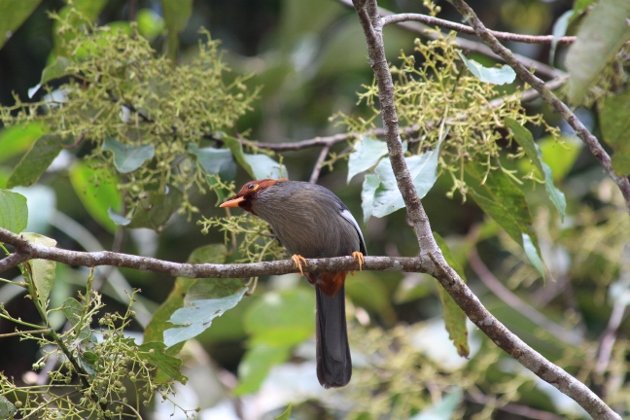
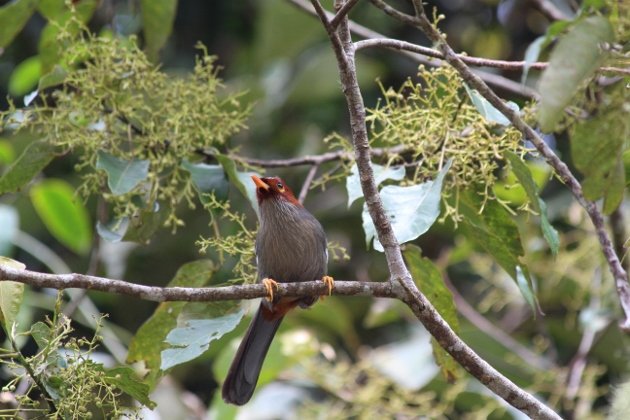
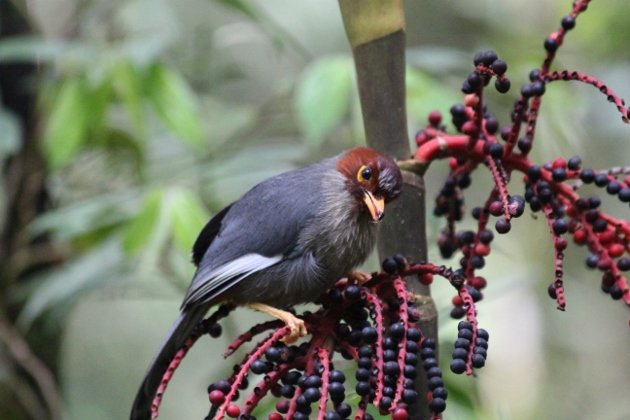
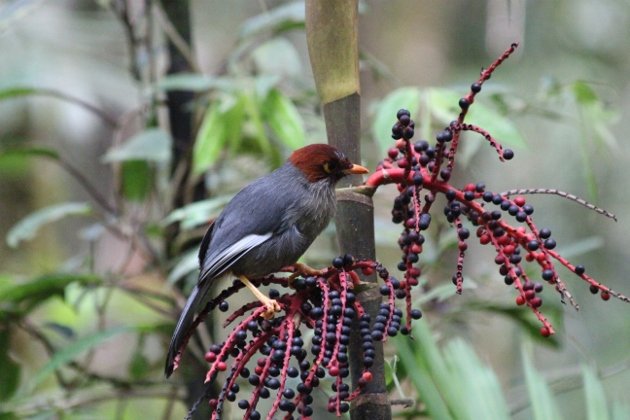

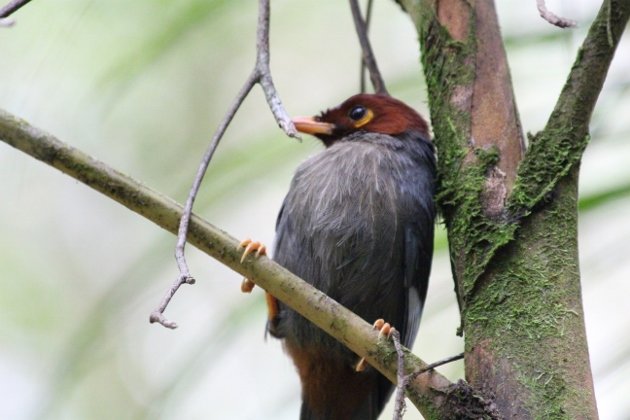










Leave a Comment